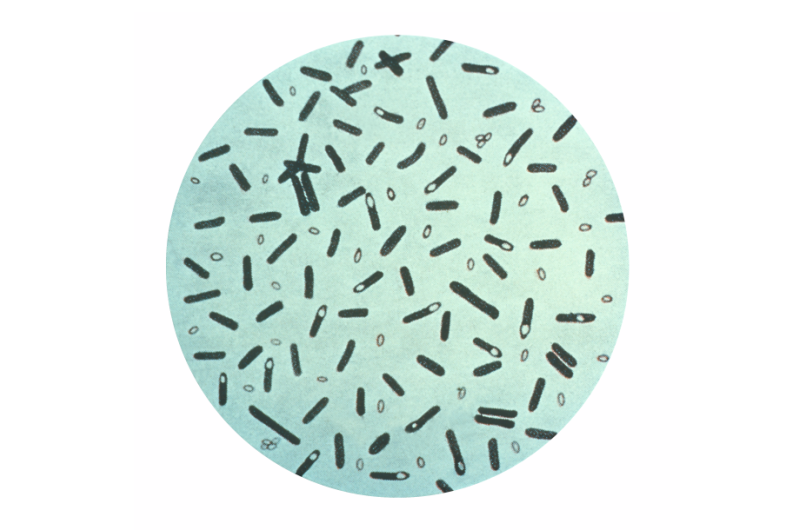January 13, 2017 report
A prion-like protein discovered in bacteria

(Phys.org)—A pair of researchers at Harvard Medical School has found an instance of a bacterial protein that behaves like a prion when inserted into another type of bacteria. In their paper published in the journal Science, Andy Yuan and Ann Hochschild describe how they found the protein and the impact it had on its new host bacteria.
Prions are self-propagating protein aggregates that were first discovered in the 1980s—they were found to be the culprit responsible for mad cow disease and some suspect they may play a role in diseases such as Alzheimer's. Their self-propagation typically occurs in the form of folding. To date, they have only been found in eukaryotic cells, which include plants, animals and fungi—and in fungi, they have also been found to be heritable, which means that are able to give certain fungi traits that are not inherited directly by the fungi itself, giving it a fast way to respond to a new threat. This finding by the research pair is the first instance of a protein behaving as a prion in bacteria.
The researchers discovered the protein as part of a study that involved looking at the genomes of approximately 60,000 bacteria using specialized software developed to detect proteins that behave as prions in yeast. They looked specifically at Rho, a part of a protein that plays a role in controlling gene activity.
The team found one such protein in Clostridium botulinum, which they promptly removed and injected into an E. coli bacterium. They found that the protein changed its shape in ways similar to folding with prions. Next, they injected the protein into yeast and found that it could duplicate the functions of a known prion. The researchers also found that injection of the protein into E. coli allowed some genes to become active that normally were suppressed by its native form of Rho, one of which offered the benefit of helping the bacterium adapt to the presence of ethanol.
The researchers plan to continue their study of the protein starting with how it behaves in its natural environment, though they acknowledge the hurdles that lie ahead due to known difficulties with conducting genetic experiments with C. botulinum.
More information: Andy H. Yuan et al. A bacterial global regulator forms a prion, Science (2017). DOI: 10.1126/science.aai7776
Abstract
Prions are self-propagating protein aggregates that act as protein-based elements of inheritance in fungi. Although prevalent in eukaryotes, prions have not been identified in bacteria. Here we found that a bacterial protein, transcription terminator Rho of Clostridium botulinum (Cb-Rho), could form a prion. We identified a candidate prion-forming domain (cPrD) in Cb-Rho and showed that it conferred amyloidogenicity on Cb-Rho and could functionally replace the PrD of a yeast prion-forming protein. Furthermore, its cPrD enabled Cb-Rho to access alternative conformations in Escherichia coli—a soluble form that terminated transcription efficiently and an aggregated, self-propagating prion form that was functionally compromised. The prion form caused genome-wide changes in the transcriptome. Thus, Cb-Rho functions as a protein-based element of inheritance in bacteria, suggesting that the emergence of prions predates the evolutionary split between eukaryotes and bacteria.
Journal information: Science
© 2017 Phys.org

















